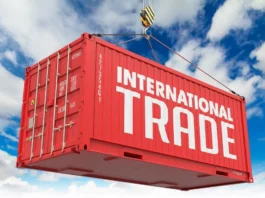
Bookkeeping and accounting, Long hours, high overhead, wasted ingredients, and difficulty making profits are barriers to restaurant owners’ success.
Yet, for those who love the business or who dream of having a place where everyone knows your name, there’s no other opportunity that comes close.
Unfortunately, once you are behind on your restaurant accounting, it isn’t easy to get caught up.
The profit margins in the restaurant industry are too tight to let your bookkeeping slip. If you aren’t watching your financials closely, it may be too late to fix problems by the time you catch them.
This guide will help you understand the basics of what a trained accountant will help with as you develop a reporting and growth plan.
An accurate restaurant bookkeeping starts with you. Whether you’re running the accounting services yourself or outsourcing your restaurant accounting, staying on top of the day-to-day bookkeeping is essential to staying ahead of your competition and turns a profit.
5 Easy Steps to handle bookkeeping for a restaurant
-
Record Sales Entries per Day
One of the first items you will have to figure out is how to record your sales properly.
Record a separate daily sales entry for each day (not monthly or weekly). With this method, you mimic how the cash and credit card deposits hit the restaurant’s bank.
Most restaurants accept credit cards and settle the batch daily. This will result in a credit card deposit or deposits hitting your bank account separately for each batch.
You need to analyze how funds are hitting your bank and set up your restaurant bookkeeping system to mirror that activity.

Generate a Sales Report
To record the daily sales, you will need to generate a report that summarizes your sales.
Most restaurant POS systems will have a daily sales summary built into them. If you need to customize the report to get more detailed information, you will need to work through your POS system’s customization.
-
Handling Accounts Payable
The next step of your restaurant bookkeeping process should be to set up accounts payable. This is the money that you need to pay to suppliers for the goods and services they provide. That’s everything from your delivery partners, to utilities and broadband internet, right through to rent for your premises. Keeping your vendors happy will be important if you want them to continue to do business with you.
- To start, learn how to enter bills and pay; both are easy tasks to accomplish.
- Enter your bills 1-2 times per week and pay them once per week.
- If you pay your bills through cheque, have a record of the payment date, amount, and cheque details.
- Another option is to pay your bills with an online bill payment.
-
Payroll
This is much more than just employee wages. Payroll covers everything from your staff’s salaries to their benefits like annual leave, insurance, and federal and state taxes. As a business owner, you are at major risk by doing your own payroll. If you incorrectly file your payroll taxes or file them late, the penalties and interest you will be assessed can be quite large. You are held at a high level of liability if you do not outsource your payroll to an accounting firm or a human resource form that is a verse in payroll systems.
Outsourcing your payroll is surprisingly affordable and a necessary option to ensure consistent and reliable paychecks and accounting.
4. Reconciliation
Reconciling your accounts is the single most important piece of the entire bookkeeping process.
This is a helpful bookkeeping process that verifies every transaction across your accounts such that the business ending balance matches. If your accounts don’t reconcile, it may be a sign that funds are being misused, or worse, being stolen.
If you use accounting software like Quickbooks, which syncs point of sale data with your accounting software, you can expedite the reconciliation process and drastically reduce the risk of errors resulting from manual entries.
Reconciling your accounts is the only way to know that you have recorded all of your financial transactions. You need to reconcile all of your accounts, not just your bank accounts.
You should reconcile bank accounts, credit cards, loans, lines of credit, and payroll liabilities.
-
Financial Reporting
If you are not using financial reporting for your restaurant, then you are running your business blind. With such tight profit margins in the restaurant industry, it is important to analyze your financial reports regularly.
Restaurants should be looking at sales vs. cost of goods sold ratios as well as labor ratios. Restaurant financial reporting can be the difference between success and failure.
Financials you should watch
Next, we’re going to explain some key financials quickly. If you have a bookkeeper and accountant, they will provide you with a detailed report on each of these. If you don’t, it may help you understand the financials below mean—and help you understand how your business is performing.
Cost of Goods Sold bookkeeping and accounting.
Cost of goods sold (COGS) is the total cost of all the ingredients you use to make menu items, right down to the garnishes, condiments, and herbs. It’s no secret that you’ll have to buy ingredients to make food in the restaurant business.
Usually, about a third of a restaurant’s gross revenue goes towards paying for COGS. It’s an important number for your business.
Prime costs
Put, the prime cost is the COGS as mentioned above—plus the labor costs of your salaried and casual staff. Industry averages suggest your prime costs should be between 55% and 60%.
Food cost
Food cost is the ratio of a restaurant’s cost of ingredients (food inventory), and the revenue those ingredients create when you sell menu items.
Food cost percentage shows how much of your overall sales are spent on ingredients and food supplies. Keeping tabs on your food costs will help you set menu prices and maximize profits. Food costs depend on the type of restaurant but normally are around 28-35% of revenue.
Contribution margin
This is the difference between the sale price and the variable costs associated with its production and sales process.
Inventory turnover ratio
This means how often you replace your inventory because of sales.
Inventory turnover for most restaurants should be very high because you’re keeping the food fresh. The food is normally purchased weekly and often more than once per week, depending on the food being sold in the restaurant. Most restaurants would have an inventory turnover of 45-60 times for food and 10-12 times for beverages,” he said.
Break-even point
This is when the revenue you make covers all your costs.
When you calculate the break-even point in dollars, you’re estimating how much revenue your restaurant will need to generate to end with a $0 balance at the end of a certain period of time.
When you calculate the break-even point in units, you’re learning how many pizzas, coffees, fixed-price meals you’ll need to sell to achieve that same goal.
Gross profit
Your gross profit is the difference in value between the selling price and the cost of the ingredients and materials used to make a dish (the COGS).
Net profit
Your net profit is the amount leftover from the gross profit after deducting operating expenses such as payroll and tax, rent, utility bills, ingredients, and equipment leasing costs.
Cost of Occupancy and Equipment
Unless you’re lucky enough to own space and your own equipment outright, you’ll need to pay for your infrastructure. That could be rent or a mortgage and property taxes.
Utilities, cooking and cooling equipment, insurance, and signage are common expenses, but you’ll also need to consider maintenance costs.
Remember, servicing your commercial ovens and refrigerators will probably cost more than what you pay for your Frigidaire at home.
Cost of Marketing and Administration
Lastly, you’ll want to get the word out that you’re open for business. That may include newspaper ads and billboards, in addition to social media.
Social media, at least, is free — and you’ll have direct access to the customer marketplace you want to serve. Offer promotions and coupons to get customers in the door.
You’ll want to pay yourself, of course, plus any contractors you need to help with necessities, such as bookkeeping. You’ll be busy managing day-to-day operations, so consider outsourcing payroll, payables, and other functions to a firm that can let you focus on making your business a success.
Looking at profit and loss comparisons to previous periods and years will also give you some insight into how things are going financially.
When to hire an accountant for your restaurant
With everything that goes into keeping your books up to speed and accurately, it might make sense to hire a qualified and accredited finance professional to help you.
Before you even start the business, accountants will give you guidance from organizational formation, filing requirements that keep business in compliance with laws both federal and state that would prevent penalties later on.
While you can certainly take control of your restaurant’s finances, if you aren’t a numbers person, to begin with, it may be wise to get help from someone who is. “Hiring a bookkeeper depends on your accounting background and your ability to have the time to do the job properly.
Restaurants should hire an accountant to help with the proper filing of the income tax returns and planning for the year.
As they say in the business industry, leverage your strength and outsource your weaknesses.
Take control of your restaurant’s finances.
Now that you have an idea of what bookkeeping consists of, it’s time to decide: do you want to take it on internally or hire external help? With the effects of COVID-19 affecting businesses’ cash flow across many industries, handling accounting and bookkeeping internally maybe your best option if you want to minimize expenses.
There’s never been a better time to take control of your finances.












